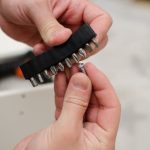Energy Efficiency Ratio (EER) measures the energy efficiency of air conditioners, indicating how efficiently they can cool a space. The higher the EER rating, the more efficient the unit is. In the last two decades, there have been significant advancements in improving EER in home air conditioners, resulting in more energy-saving options for homeowners.
Home air conditioners play a crucial role in maintaining comfortable indoor temperatures, especially during hot summer months. With increasing awareness about energy conservation and environmental sustainability, the demand for energy-efficient appliances like air conditioners has grown substantially. This has prompted manufacturers to focus on improving EER ratings to meet consumer expectations and regulatory requirements.
Advancements in technology have played a key role in enhancing the energy efficiency of home air conditioners. From innovative compressor designs to smart cooling algorithms, manufacturers have integrated various technologies to optimize performance and reduce energy consumption. These technological developments have paved the way for significant improvements in EER ratings over the years, making modern air conditioners more cost-effective and environmentally friendly.
History of EER in Home Air Conditioners
The Energy Efficiency Ratio (EER) is a crucial metric when it comes to evaluating the performance of home air conditioners. EER is defined as the ratio of cooling capacity to power input, reflecting how efficiently an air conditioner can cool a space while consuming electricity. Over the past 20 years, there have been significant advancements in improving EER in home air conditioners, leading to more energy-efficient cooling solutions for homeowners.
In the last two decades, the average EER for home air conditioners has shown steady improvement. Technological innovations such as variable speed compressors, improved insulation, and advanced control systems have all played a role in boosting EER ratings. These advancements have not only enhanced the cooling efficiency of air conditioners but also resulted in lower electricity bills for consumers. As a result, modern home air conditioners are more eco-friendly and cost-effective than their predecessors.
Government regulations have also had a notable impact on driving improvements in EER for home air conditioners. Energy efficiency standards set by regulatory bodies have pushed manufacturers to develop more energy-conscious designs. By mandating minimum EER levels for new air conditioning units, authorities have incentivized the industry to prioritize energy savings and environmental sustainability. As a result, consumers today have access to a wider range of high-efficiency options that contribute to reduced carbon emissions and energy conservation.
| Technological Innovations | Impact on EER Improvement |
|---|---|
| Variable speed compressors | Increased cooling efficiency |
| Improved insulation | Reduced energy waste |
| Advanced control systems | Precise temperature regulation |
Technology Advances
Technological advancements have played a significant role in enhancing the Energy Efficiency Ratio (EER) of home air conditioners over the past two decades. From improved compressor designs to advanced control systems, various innovations have led to higher EER ratings, resulting in more energy-efficient cooling systems for residential use.
One key aspect where technology has made strides is in the development of variable-speed motors and inverters, allowing air conditioners to adjust their output based on the specific cooling needs of a space. This targeted cooling approach not only improves comfort but also reduces energy consumption.
Moreover, the integration of smart technology and digital controls has revolutionized the way home air conditioners operate. The advent of programmable thermostats and connectivity features has enabled users to remotely monitor and adjust their cooling settings, optimizing efficiency and minimizing energy wastage. Additionally, advancements in refrigerant technology have led to the introduction of eco-friendly alternatives with lower global warming potential, further contributing to improved EER in modern home air conditioners.
In essence, technological progress has not only enhanced the performance and convenience of home air conditioners but also significantly increased their energy efficiency. With ongoing research and development focused on improving existing technologies and exploring new ones, the trend towards higher EER ratings is likely to continue in the future, benefiting both homeowners and the environment.
| Technological Advancements | Contributions |
|---|---|
| Variable-speed motors and inverters | Adjust output for targeted cooling |
| Smart technology and digital controls | Remote monitoring & optimization |
| Eco-friendly refrigerants | Lower global warming potential |
Regulatory Changes
Government regulations and policies play a crucial role in driving innovation and improvement in the energy efficiency of home air conditioners. Over the past 20 years, there have been significant changes in regulations that have led to advancements in the Energy Efficiency Ratio (EER) of air conditioning units.
One key aspect that has contributed to this improvement is the establishment of minimum energy performance standards for appliances, including air conditioners. These standards have acted as benchmarks for manufacturers to develop more energy-efficient models.
In addition to setting minimum standards, governments have also introduced incentives and rebates for consumers who purchase high-EER rated air conditioners. This has incentivized homeowners to choose more energy-efficient options when upgrading or replacing their cooling systems, leading to an overall increase in the demand for environmentally friendly products. Furthermore, regulations focusing on reducing greenhouse gas emissions have pushed manufacturers to invest in research and development aimed at improving the EER of their products.
Moreover, international agreements like the Paris Agreement have put pressure on governments to reduce carbon emissions, prompting them to implement stricter regulations regarding energy consumption in various sectors, including residential air conditioning. As a result, there has been a concerted effort by policymakers to support initiatives that promote energy efficiency and sustainability in HVAC systems. This trend is expected to continue as countries strive to meet their climate goals and transition towards a greener future.
- Establishment of minimum energy performance standards
- Incentives and rebates for high-EER rated air conditioners
- Regulations focusing on reducing greenhouse gas emissions
- International agreements like Paris Agreement driving stricter regulations
Energy Saving Benefits
Energy-saving benefits play a crucial role in the decision-making process for homeowners when purchasing home air conditioners. Higher Energy Efficiency Ratio (EER) ratings indicate that an air conditioner is more energy-efficient, which can lead to significant cost savings on utility bills. Over the past 20 years, there has been a noticeable improvement in EER in home air conditioners, making them more appealing to consumers looking to reduce their energy consumption and environmental impact.
Cost Savings
One of the key benefits of higher EER ratings in home air conditioners is the potential for cost savings for homeowners. Air conditioners with improved energy efficiency can help reduce electricity usage, resulting in lower monthly energy bills. By investing in a unit with a higher EER rating, homeowners can enjoy greater comfort without worrying about excessive energy costs. In the long run, the upfront investment in a more efficient air conditioner can pay off through reduced operating expenses.
Extended Lifespan
Another advantage of opting for a home air conditioner with a higher EER rating is its potential to have an extended lifespan compared to less efficient models. Improved energy efficiency often translates to less strain on the system components, leading to decreased wear and tear over time.
This can result in fewer breakdowns and repairs, ultimately prolonging the overall lifespan of the air conditioner. Homeowners can benefit from both immediate cost savings and long-term reliability by choosing an energy-efficient model with a high EER rating.
Environmental Impact
Beyond personal financial benefits, selecting a home air conditioner with improved EER has positive implications for the environment. Higher energy efficiency means reduced electricity consumption, which results in lower greenhouse gas emissions associated with electricity generation.
By reducing their carbon footprint through the use of energy-efficient appliances like air conditioners, homeowners can contribute to mitigating climate change and promoting sustainability. As technology continues to advance and EER ratings improve further, eco-conscious consumers are increasingly prioritizing environmentally-friendly options when it comes to cooling their homes.
Environmental Impact
The advancements in energy efficiency ratio (EER) in home air conditioners over the past 20 years have not only benefited homeowners in terms of cost savings and energy efficiency but also had a positive impact on the environment. The improved EER ratings in modern air conditioning units mean that they require less energy to operate, thus reducing overall electricity consumption. This reduction in energy usage leads to lower greenhouse gas emissions, which are major contributors to climate change.
Reduced Carbon Footprint
By upgrading to air conditioners with higher EER ratings, homeowners can significantly reduce their carbon footprint. Older, less efficient models consume more electricity and contribute to increased emissions from power plants. However, with the improvement in EER, newer models consume less energy and help lower the demand for electricity generated from fossil fuels. This shift towards more energy-efficient appliances plays a crucial role in mitigating climate change and reducing environmental pollution.
Promoting Sustainability
The push for improved EER in home air conditioners aligns with global efforts towards sustainability and environmental conservation. As consumers become more environmentally conscious, the demand for eco-friendly appliances continues to rise. Manufacturers are responding by developing air conditioning units that prioritize energy efficiency and reduce environmental impact. By choosing these high-EER models, homeowners can actively contribute to a sustainable future while enjoying the benefits of lower utility bills and enhanced comfort levels in their homes.
Future Trends
The future of Energy Efficiency Ratio (EER) in home air conditioners looks promising, with continued advancements in technology and a growing emphasis on sustainability. Innovations in the HVAC industry are constantly pushing the boundaries of what is possible, aiming to create more energy-efficient and environmentally-friendly cooling solutions for homes. As consumers become more conscious of their carbon footprint and energy usage, manufacturers are responding by developing products that prioritize efficiency without compromising on performance.
To give insight into the potential future trends of EER in home air conditioners, here are some key developments to watch out for:
- Smart Technology Integration: Integration of smart technology and automation in air conditioning systems can optimize energy usage based on real-time data, leading to greater efficiency.
- Variable-Speed Compressors: The utilization of variable-speed compressors can adjust cooling output based on demand, providing more precise temperature control and reducing energy waste.
- Eco-Friendly Refrigerants: The shift towards eco-friendly refrigerants that have lower global warming potential is a key trend in creating more sustainable cooling solutions.
These innovations not only benefit homeowners by reducing energy costs and environmental impact but also contribute to overall comfort and convenience. As the demand for energy-efficient home appliances continues to rise, it is expected that the future of EER in home air conditioners will focus on maximizing efficiency while minimizing resource consumption. Stay tuned for exciting developments in the HVAC industry that will revolutionize the way we cool our homes.

Case Studies
Energy Efficiency Ratio (EER) has indeed seen significant improvements in home air conditioners over the past 20 years, thanks to advancements in technology and regulatory changes. The evolution of EER ratings has not only benefited homeowners with energy-saving benefits but also had a positive impact on the environment. With higher EER ratings, home air conditioners are now more efficient than ever before, helping reduce energy consumption and ultimately saving costs for users.
Technological advances have played a crucial role in enhancing the EER of home air conditioners. From improved compressor designs to better insulation materials, manufacturers have continuously innovated to make air conditioning units more energy-efficient. These innovations have not only improved the cooling performance of home air conditioners but also reduced their environmental footprint by minimizing energy waste.
Moreover, government regulations and policies have encouraged the development of more energy-efficient home air conditioners by setting higher standards for EER ratings. This has incentivized manufacturers to produce products that are not only compliant with these regulations but also offer consumers cost-effective options for maintaining comfortable indoor temperatures.
As a result, homeowners can now choose from a wide range of high-EER air conditioning units that not only provide superior cooling performance but also help lower electricity bills in the long run.
Frequently Asked Questions
Are AC Units More Efficient Than 20 Years Ago?
Yes, AC units are more efficient than they were 20 years ago. Advancements in technology have led to the development of more energy-efficient models that consume less electricity while still providing effective cooling for homes and buildings.
What Is the SEER Rating on a 20 Year Old Air Conditioner?
The SEER rating on a 20-year-old air conditioner would likely be much lower compared to modern units. Older models typically have a SEER rating between 6-10, while newer ones can range from 13 to over 20. This indicates a significant improvement in energy efficiency over the years.
Have Air Conditioners Become More Efficient?
Air conditioners have definitely become more efficient in recent years. Manufacturers are constantly innovating their products to meet stricter energy efficiency standards and consumer demand for sustainable cooling solutions. This has resulted in the development of AC units that offer better performance while reducing energy consumption and operating costs.

I’m thrilled to have you here as a part of the Remodeling Top community. This is where my journey as an architect and remodeling enthusiast intersects with your passion for transforming houses into dream homes.





